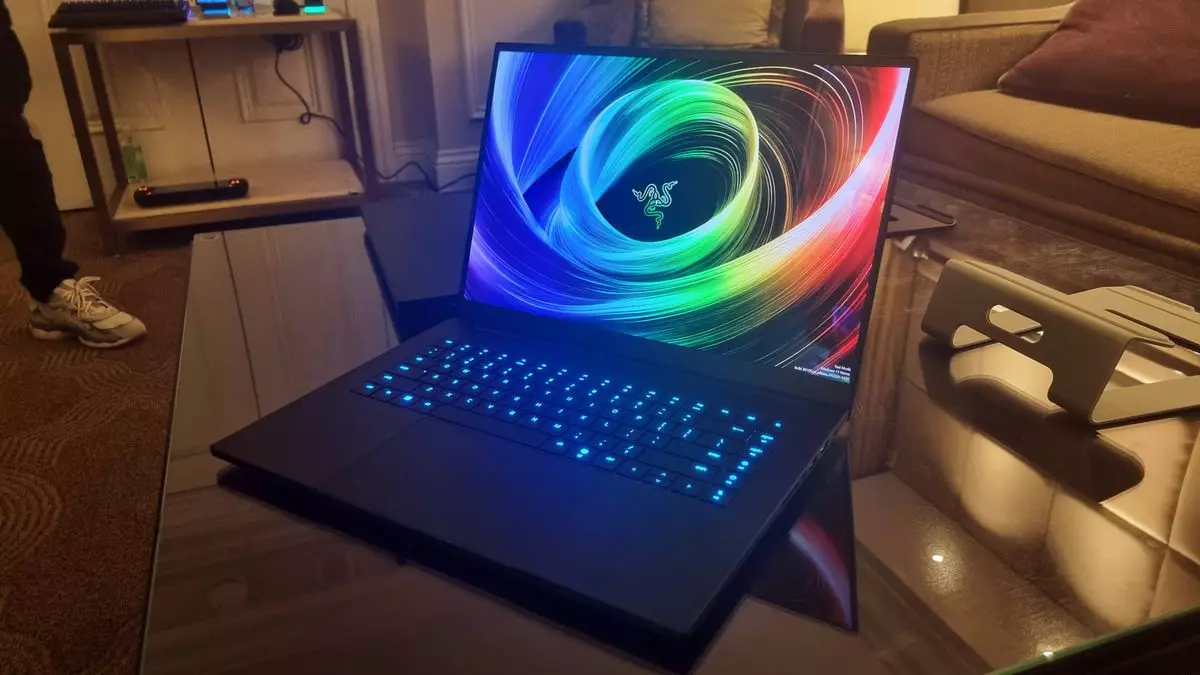In recent years, gaming laptops have evolved from bulky, poorly designed machines into sleek, powerful devices that rival their desktop counterparts. Among these, Razer has carved out a reputation for creating high-end gaming laptops often compared to Apple’s MacBook in terms of aesthetics and functionality. However, this comparison is not merely rooted in design; it also involves pricing strategies that demand critical examination as gaming technology continues to advance.
The term “Razer Tax” has become synonymous with the brand’s approach to pricing, which often places its products at a premium compared to competitors. The upcoming Razer Blade 16 is priced at $2,800 with an RTX 5070 Ti graphics card and $3,200 with an RTX 5080. While the prices appear steep, they reveal a notable trend: competitive pricing adjustments in response to emerging rivals. The previous generation’s RTX 4080 model was priced at a hefty $3,600, making the new offerings appear more appealing financially, especially when considering the hyper-competitive nature of the gaming laptop market.
At its core, the Razer Blade 16 delivers impressive specifications that justify its price tag. With a QHD+ 240 Hz OLED screen, 1 TB SSD, and 32 GB of memory, it showcases Razer’s commitment to delivering high-performance equipment tailored for gaming and creativity. However, Razer doesn’t shy away from offering even higher configurations, such as a version boasting an RTX 5090, 2 TB of storage, and a Ryzen AI 9 HX 370 processor for $4,200. This premium setup may entice buyers looking for the latest and greatest, but it raises questions about whether the price increase aligns with real-world performance improvements.
The competitive landscape of gaming laptops continues to shift, with established brands like Asus making significant strides. The ROG Zephyrus line, for example, has emerged as a formidable opponent for Razer, offering a premium feel at often more accessible price points. While it may not always match Razer in raw performance, the allure of superior pricing and comparable design will likely challenge Razer’s longstanding premium pricing strategy.
This dynamic provokes inquiry about whether Razer will continue to adjust its pricing to remain competitive amid the influx of capable alternatives. The aggressive pricing strategies hinted at during 2024 announcements may signify a broader shift in the overall gaming laptop market towards addressing fluctuating consumer demands.
One of the notable changes in the Razer Blade 16 is its physical design, which has notably slimmed down by roughly 30% in volume. This marks a shift away from the bulkier models of previous generations, addressing consumer demands for portability without sacrificing performance. The decision to incorporate soldered memory over removable DIMMs in this iteration aids this transition, allowing Razer to produce a more elegant device that feels lighter yet maintains robust performance.
Despite these improvements, essential questions linger: Is the mere reduction in size enough to justify the ongoing premium pricing? And how will consumers respond to these design changes against competitors that may offer better value for similar features?
The landscape of gaming laptops is constantly evolving, driven by technological advancements and shifting consumer expectations. Razer’s latest laptop offerings reflect these changes while still grappling with the broader implications of their premium pricing strategies. As competition heats up, particularly from brands like Asus, it will be essential for Razer to reassess its place in this market. The introduction of more competitively priced models may signal a willingness to adapt, indicating that the era of exorbitantly priced gaming laptops may be drawing to a close. Only time will tell if its legacy as the “MacBook of gaming laptops” can endure in an increasingly complex and dynamic market.

